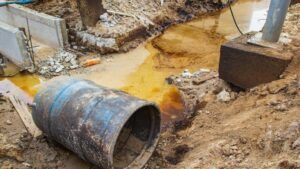The Massachusetts Contingency Plan (MCP) Numerical Standards is a set of standards that establishes liability for operators and owners of zones that are contaminated with hazardous material or oil. The MCP establishes programs under the mandates for risk assessment, required assessment, and remedy hazardous material and oil contamination. Therefore, the plan is fundamental to determining if remediation is called for at a site or if a response is unnecessary. Although the plan maintains site-specific assessment as an elective means to creating and determining cleanup goals, the assessment may not be warranted at some selective sites. As such, disseminated standards highlighted in the plan offer easy to use and have predictable results.
The Department of Environmental Protection (DEP) developed and mandated the Massachusetts Contingency Plan Numerical Standards after being tasked with creating regulations. The objective of the plan is to ensure the sustainability of safety, health, environment, and public welfare, to ensure that timely and appropriate actions are undertaken after the release of hazardous and oil material, and to direct government resources to sites that have not been properly cared for by concern parties. In addition to these goals, the plan also ensures that a program is established to audit the number of actions that the DEP has not conducted.
The MCP applies to people required by the law to inform the Department of Environmental Protection of oil and hazardous substances threats. Moreover, persons in the Massachusetts area who must perform response actions at various sites are mandated to abide by the plan. The Massachusetts Contingency Plan also concerns individuals responsible for regions where the release of hazardous material and oil occurs frequently. Therefore, the MCP maintains general oversight of the most precarious sites.
The Massachusetts Contingency Plan (MCP) Numerical Standards

All compiled environmental guidelines and standards are shown on the ESdat website. These are pre-loaded into ESdat Online.
ESdat is a specialist environmental database system; used to validate and import a broad spectrum of Environmental Data and help users analyze and report it.
ESdat Online delivers a highly cost-effective and efficient approach to store your ongoing monitoring environmental data, optionally with a historical data upload provided as a getting started service. ESdat Online is perfect if you want a cloud-based system that collates and reports your ongoing laboratory and field results.
ESdat Server provides the advantages of ESdat Online with the option of adding ESdat Desktop for data experts to upload their historical data, effectively interrogate the raw data being used within the database, and automatically launch and send data to other Desktop Applications such as Surfer, ArcGIS and Excel.
A variety of complementary products are also available to help with related work, such as sample planning and electronic Chain of Custody (LSPECS), offline field data collection or bore logging (pLog), production of bore logs (ESlog), public portals and customized reporting.
Reference
Matos-Perez, R. J. (2015). The privatization of the cleanup decision making authority: The Massachusetts MCP. Northeastern University.






